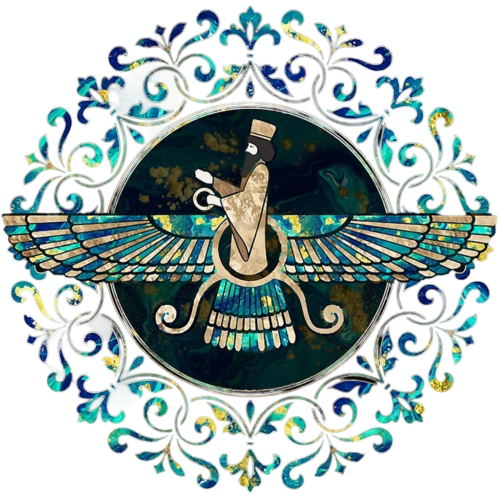Symbols and semiotics in Iranian carpets
Iranian Carpet, particularly Persian rugs, are renowned for their intricate designs, which often incorporate a rich tapestry of symbols and semiotics. These symbols convey deeper meanings, cultural significance, and stories that are woven into the fabric of the persian carpet. Here are some common symbols and their associated meanings in Iranian carpets:
- Floral Motifs:
- Palm Tree (Nakhl): Represents life and fertility.
- Pomegranate: A symbol of fertility, abundance, and prosperity.
- Cypress Tree: Symbolizes eternal life and the connection between heaven and earth.
- Lily: Represents purity and divine beauty.
- Geometric Patterns:
- Hexagon: Often found in tribal and nomadic rugs, symbolizes protection and unity.
- Diamond: Represents the garden or paradise and may symbolize protection from evil spirits.
- Animal Motifs:
- Birds: Birds, particularly phoenixes and peacocks, symbolize immortality and the divine.
- Lion: A symbol of bravery, strength, and power.
- Fish: Represents fertility and abundance.
- Mythical Creatures:
- Dragon: Symbolizes power, strength, and protection.
- Sphinx: Often found in Persian carpets, it is a guardian symbol.
- Calligraphy:
- Persian carpets may feature verses from the Quran or Persian poetry, adding spiritual and artistic significance to the silk rug.
- Medallions:
- Central medallions in many Persian rugs represent the eye and serve as protection from the evil eye.
- Mihrab (Prayer Niche):
- Found in prayer rugs, the mihrab symbolizes the direction of Mecca and is used as a guide for prayer.
- Boteh or Paisley:
- This teardrop-shaped motif has various interpretations, including the sprouting of a seed or a symbol of life and eternity.
- Gul (Flower):
- Often found in tribal rugs, the gul symbolizes protection, love, and well-being.
- Herati or Fish Pattern:
- A repeating pattern featuring a central diamond surrounded by curving leaves, symbolizing water, fertility, and fish.
- Colors:
- Different colors have symbolic meanings. For example, red can symbolize life and passion, while blue may represent the infinite and the divine.
- Border Patterns:
- The border design often features repeating motifs that frame the central field. These motifs can also hold specific meanings, depending on the region and design.
- Knot Density:
- The number of knots per square inch can vary and may influence the carpet\’s value. Higher knot density is often associated with finer craftsmanship.
- Directional Symbols:
- Some carpets have directional symbols to indicate the orientation of the rug, typically used in prayer rugs.
- Abrash:
- The variation in color within a carpet (abrash) is often seen as a symbol of the imperfections in life and the uniqueness of each creation.
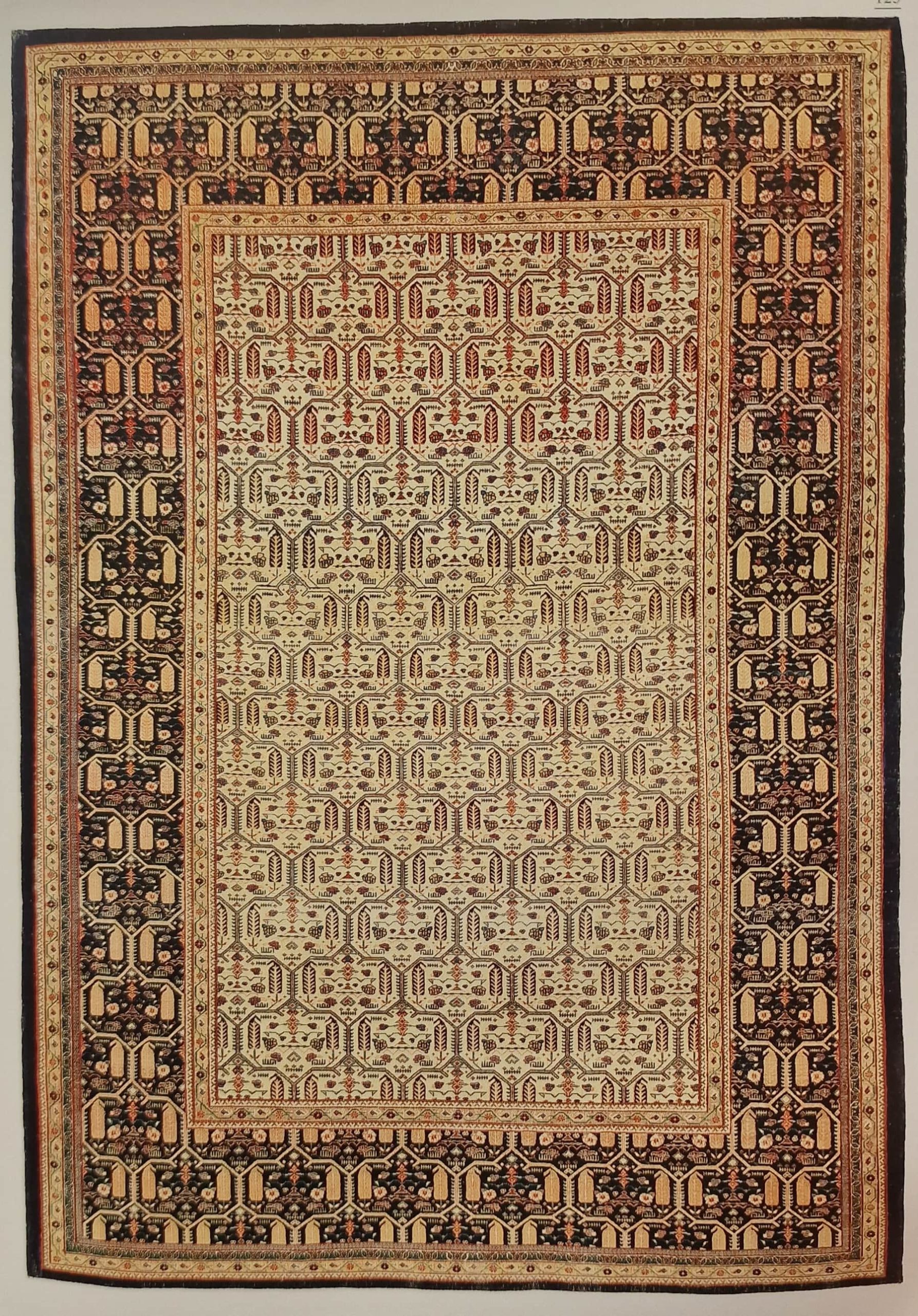
These symbols and semiotics in Iranian carpets add depth and cultural significance to the art form. They reflect the weaver\’s creativity, storytelling, and connection to their heritage. While many symbols have shared meanings, nuances and interpretations can vary among different regions and weaving traditions in Iran.
Click to buy a silk carpet combining machine and handwork machine rugs.
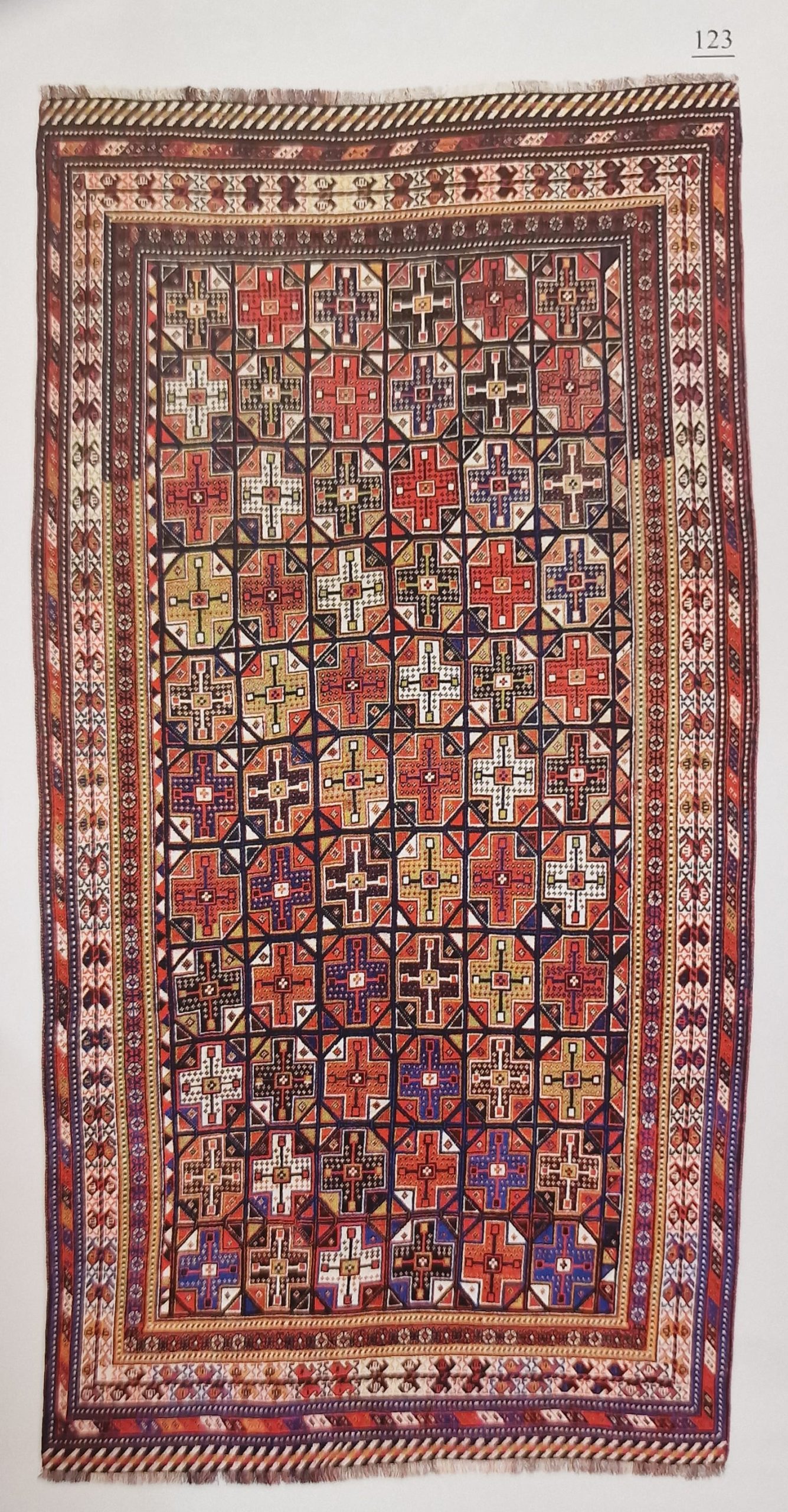
Symbols and semiotics in Iranian carpets, often referred to as Persian carpets
Iranian silk carpet, often referred to as Persian carpets, are renowned for their intricate designs and rich symbolism. These carpets serve not only as functional floor coverings but also as artistic expressions of Persian culture, history, and spirituality. Here are some common symbols and semiotics found in Iranian carpets:
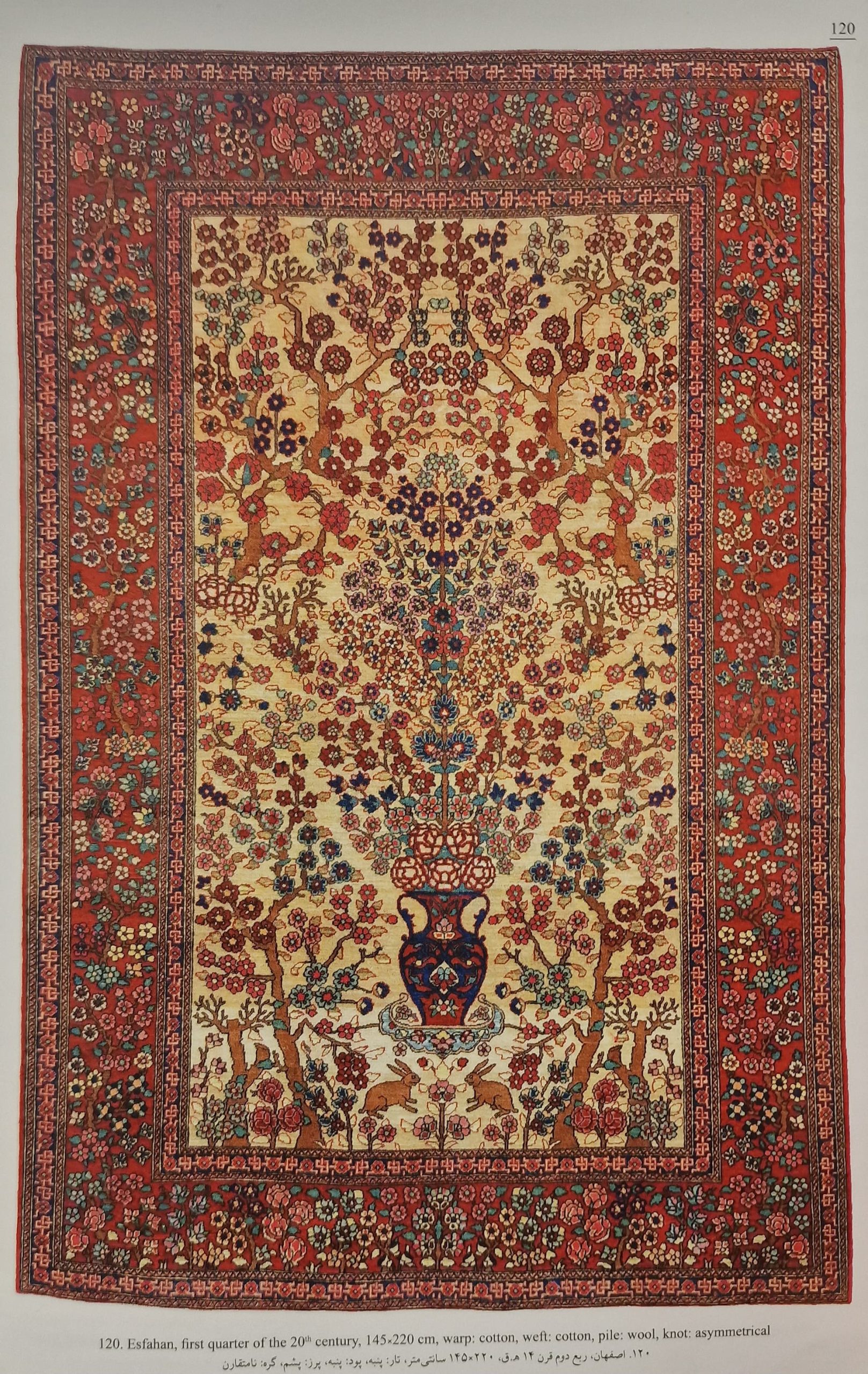
- Floral Motifs:
- Flowers and plants are common symbols in Persian carpets. They can represent the beauty of nature and life\’s impermanence.
- The \”Tree of Life\” motif, featuring a tree with branching limbs and lush foliage, is a prominent symbol representing the cycle of life, growth, and eternity.
- Geometric Patterns:
- Geometric patterns are often used in Persian carpets. They can symbolize order, balance, and the precision of mathematical principles.
- Animal Motifs:
- Animals, such as birds, deer, and fish, are frequently depicted in Persian carpets. These symbols can have various meanings, including representing the natural world, spiritual attributes, or even astrological signs.
- Mythological and Religious Symbols:
- Persian carpets often feature symbols from Persian mythology and religion. Examples include depictions of mythical creatures like dragons, phoenixes, and griffins.
- Some carpets incorporate Islamic calligraphy and verses from the Quran, adding religious significance.
- Prayer Rugs:
- Prayer rugs are a distinct type of Persian carpet designed with a mihrab (prayer niche) that indicates the direction of Mecca. These rugs are used for Islamic prayers and symbolize the connection between the worshipper and the divine.
- Color Symbolism:
- Different colors used in Persian carpets carry specific meanings. For instance, red symbolizes life, vitality, and love, while blue can represent spirituality and the divine.
- Gold and yellow often symbolize wealth, power, and the sun, while green signifies nature and the environment.
- Borders and Medallions:
- The borders and central medallions of Persian carpets are significant. They can represent unity, the center of the universe, or a framed artwork.
- Borders often contain smaller motifs and patterns that add layers of symbolism to the overall design.
- Hexagonal Shapes:
- Hexagonal motifs, such as the \”Hexagon of Solomon,\” are believed to provide protection against evil spirits and bad luck.
- Depictions of Daily Life:
- Some Persian carpets depict scenes of daily life, including hunting, feasting, and courtly activities. These can provide insight into the culture and history of the time in which they were created.
- Regional Variations:
- Different regions in Iran have their own unique carpet designs and symbolism. For example, carpets from Isfahan may feature intricate floral patterns, while those from Tabriz often include detailed animal and hunting scenes.
- Boteh (Paisley):
- The boteh, or paisley, is a common motif in Persian carpets. It can symbolize a variety of concepts, including fertility, eternity, and life.
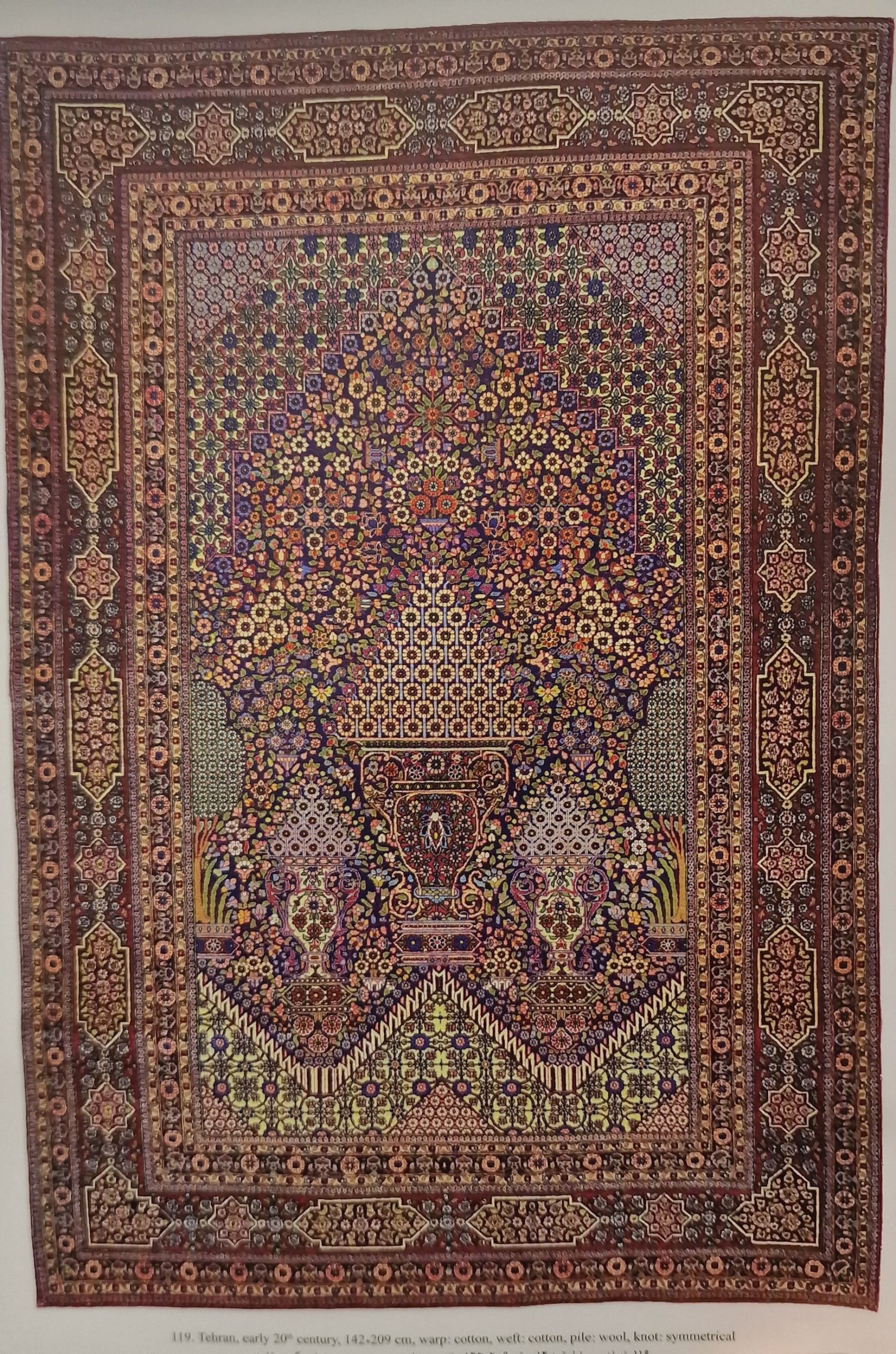
The symbolism in Iranian carpets is complex and can vary depending on the carpet\’s origin, the weaver’s intentions, and the historical context. Each carpet tells a unique story and carries layers of meaning that make them not only functional but also culturally and artistically significant.
